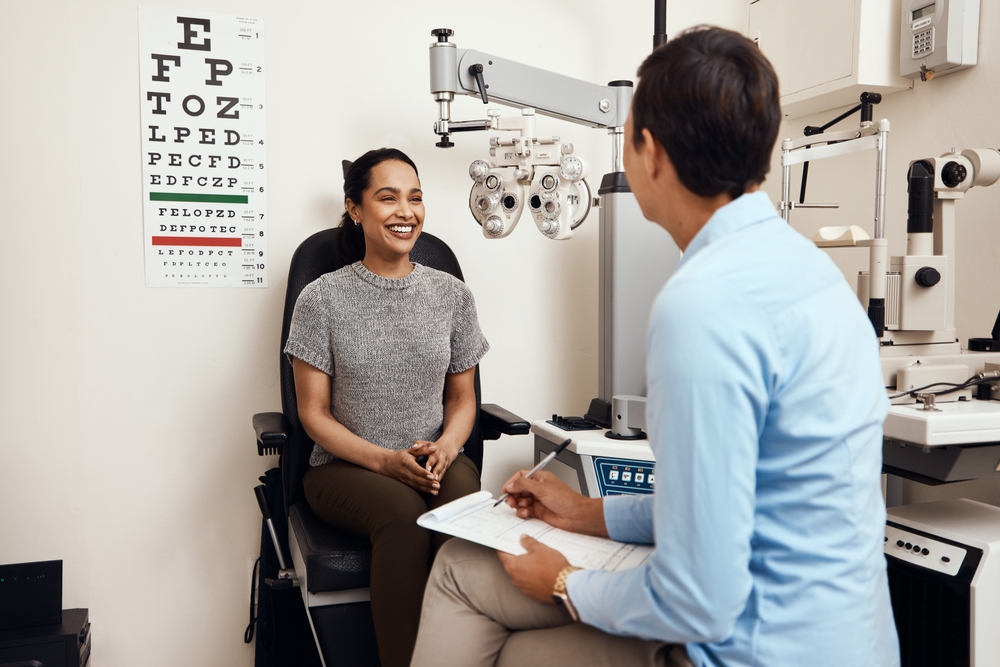Are you frustrated by constantly smudged glasses or contact lenses that are uncomfortable? If you’ve had enough of relying on glasses or contact lenses to see clearly, it’s the perfect time to consider LASIK.
Keep reading to learn more about LASIK!
What is LASIK?
LASIK is short for Laser-Assisted In Situ Keratomileusis. It is a laser surgery that can effectively correct common refractive errors, including nearsightedness, farsightedness, and astigmatism, to reduce your dependence on visual aids and allow you to see clearly.
Since it was first approved by the FDA in 1999, LASIK has corrected the vision of millions of people worldwide. Advances in LASIK technology and techniques have made it one of the safest and most popular vision-correcting procedures available today.
What Happens During LASIK?
LASIK is usually performed right in your eye care provider’s surgical facility. It is a relatively quick procedure that takes about ten to fifteen minutes to fully complete.

Treatment pre-planning is essential to successful LASIK surgery. Before performing LASIK, your eye surgeon carefully measures and maps your eyes to ensure precision and accuracy during the procedure.
The Day Of
On the day of your LASIK procedure, the first step is to numb your eyes. Patients are fully awake during LASIK, but numbing medication ensures the procedure is painless.
Once your eyes are numb, the LASIK surgeon uses a laser to create a flap on the cornea, the clear outer layer at the front of the eye. The flap is gently lifted, allowing for access to the inside of the cornea.
The LASIK surgeon then uses an excimer laser to reshape the exposed corneal tissue. The excimer laser precisely reshapes the cornea, correcting your specific refractive error.
After the corneal tissue has been reshaped, your LASIK surgeon will carefully reposition the corneal flap. The flap naturally re-adheres to the eye without the need for stitches or a corneal bandage.
Right After
Many people notice improvement in their vision within hours of the LASIK procedure; however, it can take about three months for the eyes to heal fully following LASIK. While serious post-operative complications are very rare, you may temporarily experience dryness, itching, tearing, and redness after LASIK.
These are usually treated with over-the-counter eye drops and typically clear up on their own. The outcome of LASIK surgery for a majority of patients is excellent vision improvement.
Over ninety-five of LASIK patients report complete satisfaction with the procedure and results!
Who is a Good Candidate for LASIK?
While LASIK has successfully corrected the vision of millions of people, it is not suitable for everyone. To be considered a good candidate for LASIK, you should meet the following criteria:
You Are At Least 18 Years of Age
As people grow up, their eyesight can undergo many changes. This is especially true during adolescence, when hormonal changes can affect clear vision.
By the age of eighteen, most eye care providers agree that a person’s vision is stable.

You Have a Stable Prescription
For the best vision outcomes, a good LASIK candidate should have a prescription that has stayed the same for at least twelve months. If a person’s eyesight is going through changes that require frequent changes to their vision prescription, they should wait to have LASIK.
Your Prescription is Within Certain Limits
If you have a very high vision prescription, LASIK might not be the best choice. While LASIK can correct the most common refractive errors, it may not effectively restore the vision of individuals with more pronounced near- and far-sightedness or astigmatism.
You Don’t Have Untreated Dry Eyes
One of the temporary complications after LASIK is dry eyes. If you already have untreated dry eyes, undergoing LASIK can make them worse, and following surgery, they can be easily damaged by excessive rubbing or scratching.
You Are in Overall Good Health
Certain chronic health conditions, including diabetes and high blood pressure, can make correcting vision with LASIK potentially dangerous. These conditions can create high-pressure levels within the eye, making a LASIK procedure risky.
You Have Thin Corneas
The thickness of your corneas may affect whether you are considered a good candidate for LASIK. Thin corneas can make it difficult for the eye surgeon to safely create the corneal flap necessary for vision correction with LASIK.
Are There Alternatives to LASIK?

If your eye care provider has determined that you are not a good candidate for LASIK, there are other options for permanent vision correction. These include photorefractive keratectomy (PRK), refractive lens exchange (RLE), and small incision lenticular extraction (SMILE).
If you have thin corneas or chronic dry eyes, PRK or SMILE can be an effective alternative. If you have extreme near- or farsightedness, RLE might be able to help you end your reliance on corrective eyewear.
If you are ready to permanently free yourself from the inconvenience, expense, and worry of corrective eyewear, LASIK can help you achieve that freedom! With impressive results and high rates of patient satisfaction, LASIK is an excellent choice for permanently restoring your vision!
Do you want to learn more about LASIK or determine if you may be a good candidate for the procedure? Schedule a LASIK consultation at Nevada Eye Physicians in Las Vegas, NV, today!



